Christopher Bartle begins a series on dressage – covering elementary to FEI level movements, and you will find that he is as accomplished a dressage coach as he is an eventing coach…
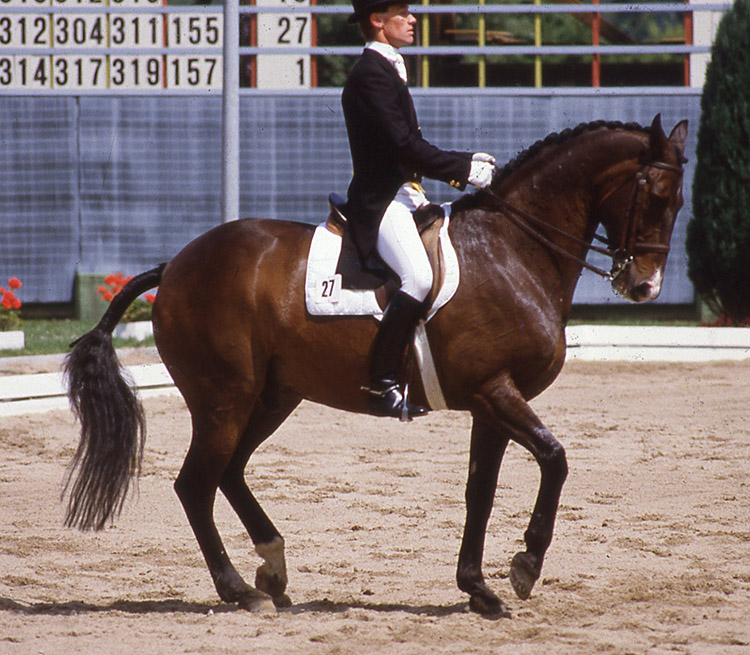
Christopher Bartle was seventh in the Grand Prix Special at the LA Olympics, fourth in the European Dressage Championships in 1985 and second in the Nashua World Cup in 1986.
In this series of articles, the work towards collection will be discussed, including riding the movements of the advanced tests. Some movements require greater collection, others develop or improve collection if done correctly, while still others can be done with or without much collection. The first step therefore is to consider what is ‘collection’, its relation to the basic work, and the rider’s role in asking the horse to collect.
Importance of Basics
It is important to understand the relationship between basic work and collection. Without the basics it is not possible to have collection. First of all the horse is taught the responses which will enable him to collect and then, as he becomes more consistent in these responses, the demands are increased through greater loading of the hindquarters.
The FEI definitions refer to the qualities by which the dressage performance is judged. These are as follows A) The freedom and regularity of the paces; B) The harmony, lightness and ease of the movements; C) The lightness of the forehand and the engagement of the hindquarters, originating in lively impulsion; D) The acceptance of the bridle, with submissiveness throughout and without any tenseness or resistance.
‘The freedom and regularity of the paces’ and ‘the acceptance of the bridle’ should be the end result of the basic work. Collection leads to ‘the harmony, lightness and ease of the movements’ and ‘the lightness of the forehand and the engagement of the hindquarters originating in a lively impulsion’. All this in turn leads to the enhancement of the paces through greater cadence. Frequently the cause of problems in schooling horses can be traced to a misconception as to what is collection.
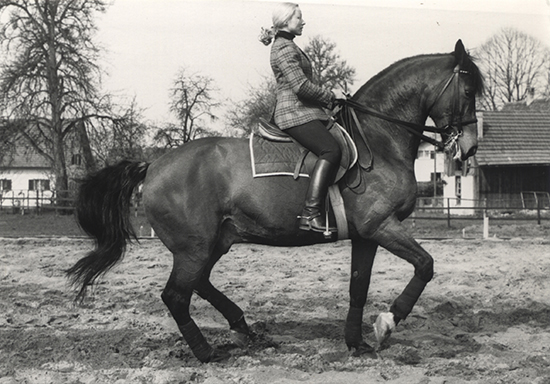
Granat and Christine Stückelberger dominated the late 70’s
When Granat reigned supreme during the late 70s, it became fashionable to look for a very elevated and cadenced trot, and many riders made the mistake of trying to emulate this trot with horses which were not of the same conformation to have the type of movement. To many riders, collection only becomes a consideration when the test asks for collected trot at higher elementary level.
Article continued below…
Defining Collection
So what is collection? To decide this, we must look at the question in general terms and then in physical terms. The dressage rule book, in outlining the object of dressage, talks of the horse becoming confident, attentive and keen. When one looks at the outline of the horse in genuine collection, the raised and arched neck combined with the engaged hindquarters give the appearance of the horse being ‘at attention’, proud, ready to react, light on his feet, and lively and energetic, without being stiff with nerves and tension.
Some degree of tension in the muscles is essential, rather as one would wish to have tension in a spring, but not to the extent that it causes the horse to stiffen.
The basic work will encourage the horse to stretch the muscles. As the demands of collection increase, the tension of the muscles will increase, but this must not cause the horse to shorten the muscle groups either through nerves or resistance. It is this tension or energy in the muscles which imparts the spring to the step. In physical terms, collection involves the transfer of weight from the forehand to the hindquarters. To do this, the horse must place the supporting hind foot closer to the line dropped from the centre of gravity. The engagement of the hind leg comes about from the acceptance of the slowing aid and lateral submission.
Engagement of the hind leg is necessary, but it is possible for the horse to over-engage the hind leg to avoid flexing the hock.
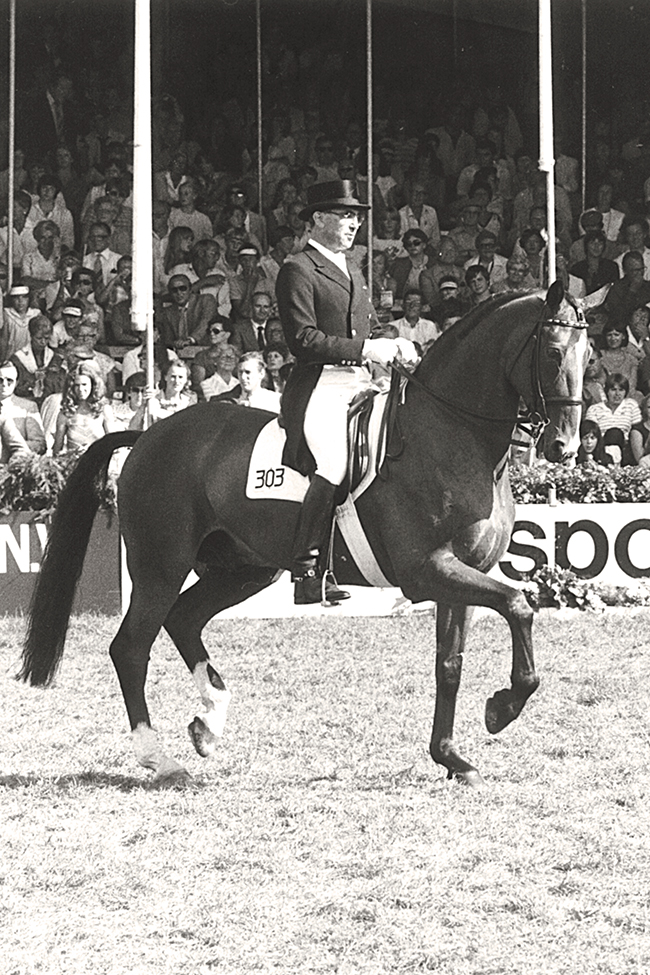
Ahlerich and Reiner Klimke, masters of collection…
Hind Leg Flexion
In addition to placing the hind leg well forward, the horse must also be encouraged to use the leg as a shock absorber or a spring so that the ride becomes more comfortable, and so that the energy stored by the muscles in the shock-absorbing phase is re-imparted into the next step. This flexion of the hind leg slows down propulsion and therefore a greater effort is required to push off the hind leg in the next phase. It is for this reason that the horse’s natural defence is to straighten and stiffen the hind leg as it comes to the ground.
Achieving the flexion of the hind leg is partly a question of understanding on the part of the horse, and partly a question of the physical strength of the groups of muscles of the leg which are involved. These muscles are in fact the propulsive (extensor) muscles of the hind leg, and their strength is developed gradually through the basic work, and through hill work, jumping, etc.
The art of schooling the horse is not only to teach the horse how to engage, but also to introduce the demands for greater, sustained engagement in a manner which avoids resistance to flexing the hind leg. This resistance will come about if the basics are not well established, or if the demands for collection are increased too quickly and maintained beyond the horse’s physical capacity at the time. Knowing how is one thing; being strong enough to do it is another.
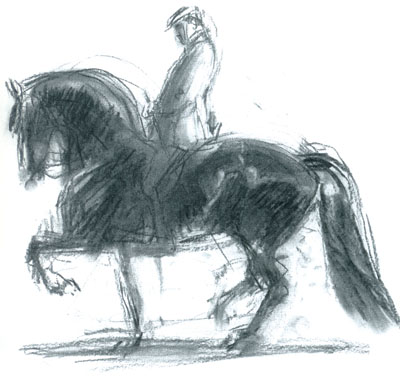
Freeing the Forehand
The freeing of the forehand as the hind leg is engaged and active is dependent on the supporting role of the horse’s topline. The muscles of the neck and back, if stretched and supporting will draw up the base of the neck and lead to the raised and arched appearance which is sought after. This of course must be volunteered by the horse rather than imposed by the rider’s hands. The stretching of the neck upwards will lead to the greater freedom of the forehand, and a rounder action from the shoulder, because the muscle which draws the forearm forward is attached at the poll.
In watching or judging dressage, it is fairly easy to see when movements go obviously wrong. It is much harder to decide whether genuine collection is shown when required. Apart from the outline and the cadence, it is also helpful to examine the swing of the forearm to see how far ahead of the vertical the forefoot comes to the ground and then for how long the foot stays on the ground behind the vertical.
Energy and Impulsion
Collection is not possible without energy. This energy must be offered by the horse in response to a non-driving leg aid. It is important that the horse goes forward to the rein without constant use of the leg and seat The strong driving aid of the seat and leg causes the horse to push himself forward with the hind leg, but this is in direct opposition to the concept of collection where the horse must carry with the hind leg rather than push.
The rider’s role must be to encourage energy without greater push and yet also without causing anxiety or stiffness. The greater the degree of collection, the more still the rider should be in the saddle. Even a ‘following’ seat will drive the horse forward rather than encourage him to collect. The rider’s hand and arm too must become more still as the seat does. This will encourage the horse to reduce the oscillations of the head and neck, particularly in the walk and canter, and so develop the strength of the topline which gives rise to the freedom of the forehand.
The timing and application of the halfhalts down the outside rein must convert the forward thrust into more sustained support of the hind leg without losing energy or impulsion. As explained previously, the application of strong driving aids with strong hand actions leads either to brake failure or engine failure, but not to collection.
more below…
Achieving Collection
The rider obviously has an important direct role in working towards collection through the way he uses his seat, legs and half-halts. However, just as important are the various exercises which place the horse in a position to offer collection if allowed. The rider can then build upon the collection offered and develop the horse’s confidence and ability to sustain collection. The basis of these exercises will be the loading of the hindquarters while denying support to the forehand.
During the work in the early stages, the horse starts off by being asked to turn about the forehand and then about his middle. He is moved away from the direction of his lateral flexion and out on the circles. Work towards collection will start by reducing the size of circles. The horse will be asked to move the forehand about the quarters towards the direction of the lateral flexion at the poll. The demands are increased through the collecting exercises and then the pressure taken off by returning to the basic exercises.
It is only by increasing and sustaining the demands that the horse will become stronger; but if the demands are unreasonable, the horse will lose confidence and defend himself by resistance. Sometimes, the rider will go too far and will then have to return to basics for some time. Equally, the rider will sometimes not be demanding enough. The extent to which the pressure should be applied will vary from horse to horse depending on temperament and physique.
Collection is the basis for extension. The free rhythmical paces developed during the early work will lead to the lengthening of the stride on demand. As the topline becomes stronger and the hindquarters more engaged, the lengthening becomes medium trot. The increased tension in the muscles provides the energy for the extended paces without the horse going on the forehand.
The stretching of the neck up and forward increases the reach of the foreleg while the active hind leg continues to come well forward before imparting the thrust.
In the good extended trot, the swing of the hind leg will be more forward than backwards. In the case of the horse whose topline is not strongly supported by the active back muscles or whose neck muscles are held short and contracted, the hind leg will not come well forward and the foreleg will appear to reach further than the hind leg. The rhythm is maintained in the good extension because the hind leg continues to act as a shock absorber at the moment of support. Where the horse stiffens the back and locks the hind leg, he will quicken the rhythm and go wide behind.
Breed your own Bella Rose, her sire Belissimo M is available from International Horse Breeders in Australia: www.ihb.com.au
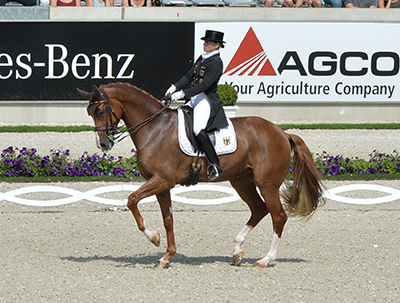
Ultimate Objectives
In working towards collection it is helpful to keep in mind the ultimate in collection in each of the paces. In the walk and the canter it is the pirouette, as the horse is expected to keep marking time on the spot with the hindquarters while coming around with the forehand. The canter pirouette places even greater strain on the muscles of the hind leg and in particular of the outside hind because, at one short moment of each stride, all the weight is loaded on that leg in a flexed state.
In the trot, the piaffe and passage represent the greatest degree of collection. The sustained flexion of the engaged haunches enables the horse to elevate the forehand without travelling forwards in the piaffe. In the passage, the spectator can often be fooled by the increased cadence of the trot combined with a generous gesture of the foreleg even though the horse, upon closer examination, is seen to be pushing with the hind leg rather than carrying.
Not all horses are capable of showing collection, and very few of showing the extreme collection required of a Grand Prix horse. Part of the art of horsemanship is to recognize the horse’s conformation and temperament and to make the most of its strengths and weaknesses. The basic work must apply to all horses irrespective of their future role, but the work towards sustained collection must be done sympathetically according to the possibilities of each horse.
The rider must keep in mind the picture of collection as the ultimate objective of the work, and then introduce the demands and the more advanced movements in a logically progressive manner. The rider should be prepared to return to the basic priorities if at any stage they are lost and endeavour to use the seat, hands and legs in a manner which encourages the horse to offer collection rather than coerces him. In this way, the final picture will be attractive to watch, which is of course the purpose of the sport or art.

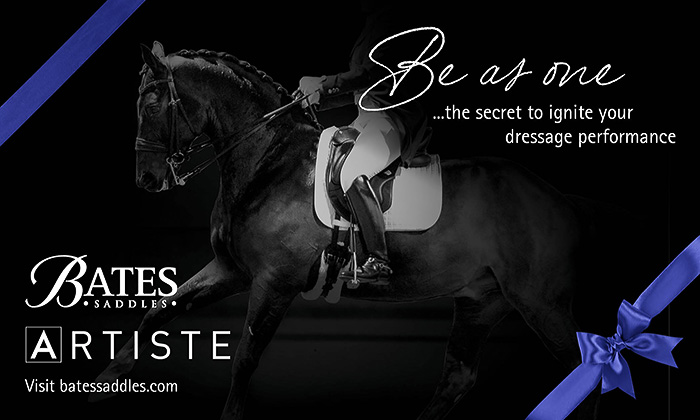
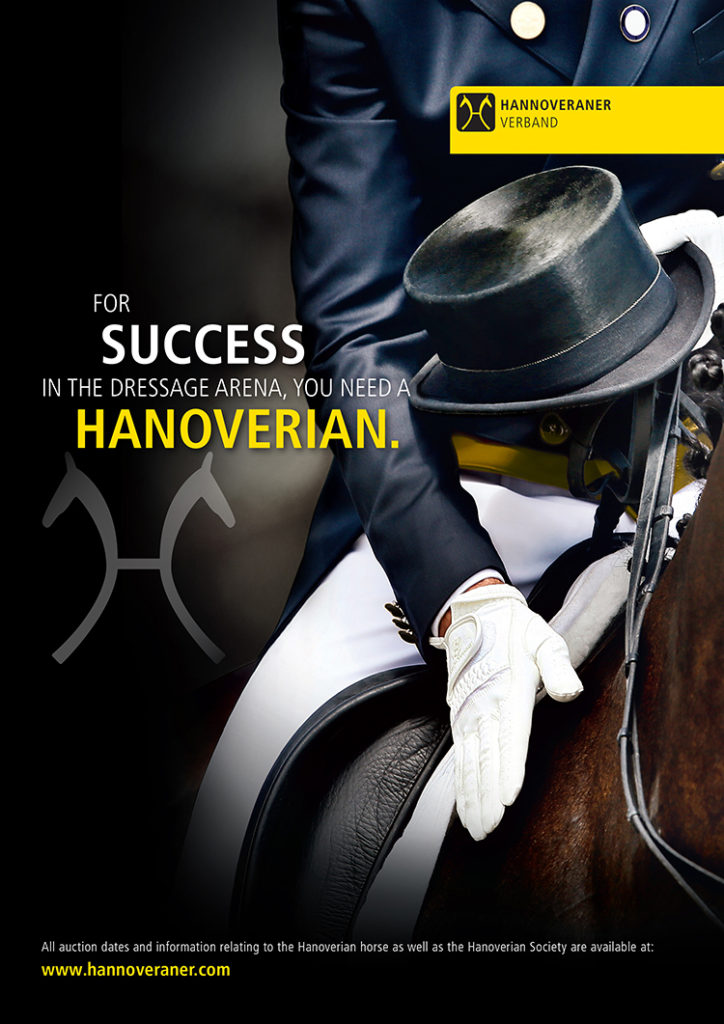
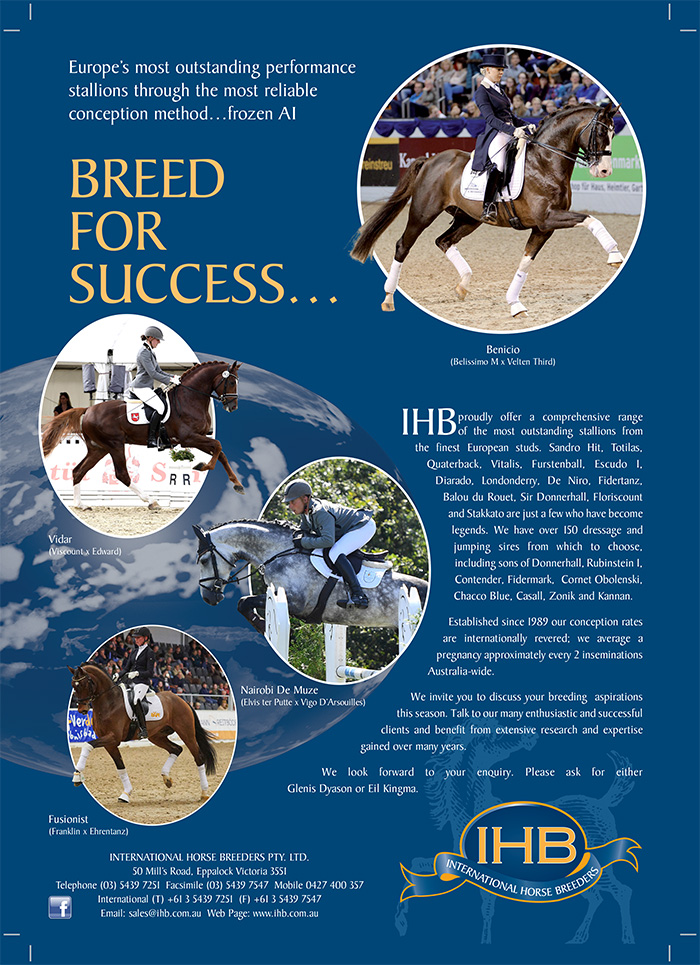
An excellent article and explanation!